 W
WBlue's 123 Time Activities is a 1999 educational game developed and published by Humongous Entertainment. The game works on Windows 95 and above, and on System 7.5.3 to Mac OS X Tiger. It was the first game in the Blue's Clues video game series, in turn based on the television series of the same name.
 W
WFASTT Math is a mathematic educational software developed and released by Scholastic Corporation in 2005.
 W
WFizz & Martina's Math Adventures is a collection of five math-related educational video games for the Windows and Macintosh platforms, developed and published by Tom Snyder Productions. The games were incorporated with the California Learning Assessment System (CLAS). The series consists of Buddies for Life, Blue Falls Elementary, Caves of Blue Falls, Lights, Camera, Fractions! and Project Sphinx.
 W
WfutureU is an educational video game developed and published by Aspyr Media on November 5, 2008 for Windows, Mac OS X, and the Nintendo DS, and created in association with test preparation company Kaplan, Inc.
 W
WJames Discovers Math is an educational video game that was developed in 1995 by Broderbund in association with Australian developer Brains.
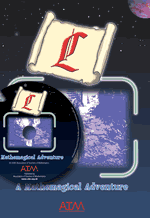 W
WL – A Mathemagical Adventure is an educational adventure game that was created for the BBC/Acorn class of computers in 1984. It was written by members of the Association of Teachers of Mathematics and found its way into school computers, predominantly in the UK. The game is controlled by a contemporaneous two-word input system in the form of "<verb> <noun>", e.g. "get book", and includes several mathematical and logical puzzles. The target audience for L is mid-late primary (elementary) school children, and the puzzles are based on this level of critical thinking.
 W
WMath Blaster Episode I: In Search of Spot an edutainment game in a line of educational products created by Davidson & Associates and a remake of their earlier New Math Blaster Plus! from 1991. Versions of the game were released for the Super Nintendo Entertainment System and Sega Genesis as simply titled Math Blaster: Episode 1. The program was translated to Spanish and was published as Mates Blaster: En Busca de Positrón. A remake was done in 1996 released as "Mega Math Blaster". When Knowledge Adventure merged with Davidson & Associates in 1997 the game had a new makeover the follow year under the title Math Blaster: Ages 6-9. Finally it was repackaged as Math Blaster: 3rd Grade in 1999.
 W
WMath Blaster Episode II: Secret of the Lost City is an educational game in the Blaster Learning System by Davidson & Associates and is the sequel to Math Blaster Episode I: In Search of Spot. In the plot of this math game, the evil Dr. Minus shoots down Blasternaut, Spot, and Galactic Commander as they search for the Lost City in their Galactic Cruiser. They crash, thankfully, next to the Lost City. Dr. Minus' 'Negatrons' try to stop them as they unlock the secret of the Lost City to save Galactic Command.
 W
WMath Blaster Jr. is a 1996 educational video game, aimed at ages 4–7. The game was re-released as Math Blaster: Ages 4 - 6 in 1997.
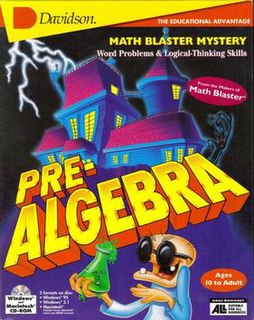 W
WMath Blaster Mystery: The Great Brain Robbery, is a product in a line of educational products created by Davidson & Associates that takes place in a different universe from the original Math Blaster one. It has no relation to Davidson's earlier Apple II game "Math Blaster Mystery". The game was released in North America, Sweden and Spain. The game was remade in 1998 with the title "Math Blaster: Pre-Algebra". The game is regarded as a 'Review and Practice' type of software.
 W
WMath Blaster! is a 1983 educational video game, and the first entry in the Math Blaster series within the Blaster Learning System. The game was developed by former educator Jan Davidson. It would be remade and re-released a number of times starting with Math Blaster Plus! and followed by New Math Blaster Plus. A complete makeover over was done for Math Blaster Episode I: In Search of Spot in 1993.
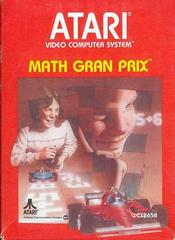 W
WMath Gran Prix is a 1982 educational video game developed and published by Atari for the Atari 2600. Along with Word Zapper, the game was one of earliest educational games released for the platform.
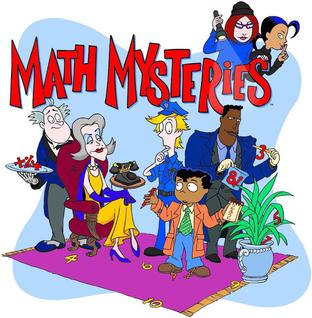 W
WMath Mysteries is a collection of five math-related educational video games for the Windows and Macintosh platforms, developed and published by Tom Snyder Productions. The games were designed to fit the NCTM standards at their time of development. The series consists of Math Mysteries: Measurements, Math Mysteries: Whole Numbers, Math Mysteries: Fractions, Math Mysteries: Advanced Whole Numbers and Math Mysteries: Advanced Fractions.
 W
WMath Rescue is a 1992 educational platform game created by Karen Crowther of Redwood Games and published by Apogee Software. Its early pre-release title was "Number Rescue". Released in October, 1992, for the DOS platform, it is a loose successor to the earlier game Word Rescue, whose game engine was used to power the new game with minor changes. Math Rescue was initially released as shareware but later achieved a retail release. It was followed by Math Rescue Plus. There were plans to have a sequel to the game called "Gruzzle Puzzles" but it was never started.
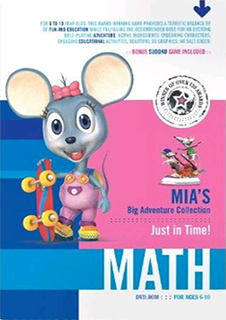 W
WMia's Math Adventure: Just in Time! is the third title of the Mia's Big Adventure Collection software series created by Kutoka Interactive. Released in 2001 in Canada and the United States, the game teaches mathematics to children between 6 and 10 years old.
 W
WMighty Math is a collection of six educational video games for the Windows and Macintosh platforms, developed and published by Edmark software. As the title indicates, the games are heavily oriented on mathematics. Two of each games cater for different age groups with fitting content. Carnival Countdown and Zoo Zillions are suited for Kindergarten and 2nd graders and teaches beginner topics. Number Heroes and Calculating Crew cater for 3rd till 6th graders and teaches intermediate topics. Astro Algebra and Cosmic Geometry are designed for 5th till 9th graders and teaches advanced topics. The games were all developed under Harcourt's strategy. In response to the series growing popularity, Edmark launched a website called the "Mighty Math Club" in November.
 W
WMy SAT Coach is a game on the Nintendo DS that helps students prepare for the SAT, a common standardized college-entry exam for American high school students.
 W
WNumber Munchers is a 1986 video game and a spin-off to the title Word Munchers. It was made by MECC for Apple II, then ported to DOS and Macintosh in 1990. The concept of the game was designed by Philip R. Bouchard, who also designed The Oregon Trail. Two versions of the game were released being the Consumer Version and the School Version. After The Learning Company acquired MECC, the game was rebranded as "Math Munchers".
 W
WProfessor Kageyama's Maths Training: The Hundred Cell Calculation Method is a puzzle video game published by Nintendo and developed by Jupiter for the Nintendo DS handheld video game console. It was first released in Japan, and was later released in Europe and Australasia. It was released in North America as Personal Trainer: Math on January 12, 2009. It was also released in South Korea in 2009. The game is part of both the Touch! Generations and Personal Trainer series. The game received mixed reviews, with common criticisms cited for the game's difficulty in recognizing some numbers and for not being very entertaining to play. At GameRankings, it holds an average review score of 65%.
 W
WReading Blaster 2000 is a remake of Reading Blaster: Invasion of the Word Snatchers created by Davidson & Associates in 1996. The game was later resold as Reading Blaster: Ages 6–9 in 1998 and, under Knowledge Adventure, as Reading Blaster for 3rd Grade in 2000. It is part of the Blaster Learning System series.
 W
WThe Secret Island of Dr. Quandary is an educational computer puzzle game developed by MECC, which pits the player against a variety of mathematical and logical puzzles. It was released in 1992 for MS-DOS and Macintosh.
 W
WTreasure MathStorm! is an educational computer game intended to teach children ages five to nine mathematical problem solving. This sequel to Treasure Mountain! is the sixth installment of The Learning Company's Super Seekers games and the second in its "Treasure" series.
 W
WTux, of Math Command is an open source arcade-style video game for learning arithmetic, initially created for Linux.
 W
WWord Munchers is a 1985 video game and the first of the Munchers educational series. It was made by MECC for Apple II, then ported to DOS and Macintosh in 1991. It was re-released in 1996 for Windows and Macintosh as "Word Munchers Deluxe". The concept of the game was designed by Philip R. Bouchard, who also designed The Oregon Trail.